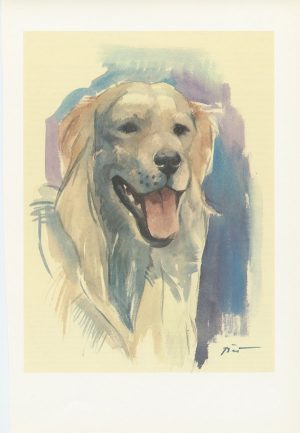
Is a theft committed at night worse than a theft committed by day? We suppose it depends. To use an admittedly poor analogy, stealing every lightbulb in the house at night when they’re really needed feels more egregious than if they’ve been taken during the day, though we suspect that in a court of law, a theft is a theft regardless of the time of day. That’s not, however, how they saw things in the 15th century, and not when it came to stealing a certain breed of dog.
Mind you, when it comes to the theft of a dog – say, our dog – we have the same sentiment as the Queen of Hearts in the video below:
“Off with his head” for stealing a dog was probably harsh even in the 15th century.” Still, when the purloined dog was a Hovawart and the crime happened in medieval Germany, fines were stiffer when the dog was taken at night because its value as a guard was that high. Indeed, the breed’s name comes from the German words Hof, which means yard or farm, and Wächter, which means watchman.
The breed was so well regarded (and even mentioned in German law) that in 1473, Heinrich Mynsinger described the Hovawart as one of the Five Noble Breeds requiring legal restitution if stolen or killed, an invaluable dog for tracking robbers and villainous miscreants.
Read more about the Hovawart below:
Image: Hovawart vintage print from 1975 offered by Anne Londez, owner of FrenchVintagePrints is available for purchase here.
